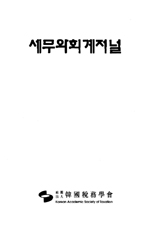- 영문명
- Policy Proposals for ReformingAutomotive-Related Taxation Based onRevenue Projections
- 발행기관
- 한국세무학회
- 저자명
- 고윤성(Yunsung Koh)
- 간행물 정보
- 『세무와회계저널』제26권 제5호, 9~34쪽, 전체 26쪽
- 주제분류
- 경제경영 > 회계학
- 파일형태
- 발행일자
- 2025.10.30
5,920원
구매일시로부터 72시간 이내에 다운로드 가능합니다.
이 학술논문 정보는 (주)교보문고와 각 발행기관 사이에 저작물 이용 계약이 체결된 것으로, 교보문고를 통해 제공되고 있습니다.

국문 초록
본 연구는 2050년 탄소중립과 급격한 전동화 추세에 부합하도록 한국 자동차 세제를 전면 재설계하기 위하여 자동차 관련 세제 개선방안을 토대로 세수 추계를 진행하였다. 세수 추계를 위하여, 취득 단계에서는 고가차(출고가 4천만 원 초과)에만 개별소비세를 유지하되, 면세구간 이하 차량의 세수 결손을 CO₂ 배출량 연동 취득세로 보전하는 방안을 적용하였다. 또한, 보유 단계는 가격·CO₂·중량의 세 변수를 단일·복합기준으로 조합한 여섯 개 모형을 설계하여, 2022~2050년 장기 세수 시뮬레이션을 수행하였다. 분석을 위한 기초 자료로 2021년 신규·말소 등록자료(약 150만 대)와 한국자동차산업협회 통계를 이용하였고, 친환경차 침투율·차령 할인계수를 반영하였다.
연구 결과는 다음과 같다. 첫째, 취득 단계 CO₂ 연동 안은 2042년까지 세수 중립성을 유지하면서 탄소 감축 유인을 제공하였다. 즉, 출고가 4천만 원 초과 차량에 한해 개별소비세를 유지하고 CO₂ 연동 취득세를 도입하면 2042년까지 세수 중립성과 탄소 감축 유인을 동시에 확보할 수 있음이 확인됐다. 둘째, 보유 단계에서는 중량 단일 기준이 세수 확보에 유리하지만 친환경 유인책이 약화하는 반면, 복합기준Ⅲ(가격:CO₂:중량=4:3:3)이 가장 안정적으로 세수를 확보하면서 형평성과 환경성을 균형 있게 충족하였다. 즉, 보유 단계에서는 4:3:3 복합기준이 단일 기준보다 세수 안정성·형평성·환경성을 고르게 충족하며, 2037년 이후 연간 약 6조 원 수준의 세수를 유지하는 것으로 분석되었다. 결론적으로 내연기관 과세 기반이 급격히 약화하는 상황에서, 본 연구는 한국 자동차세를 ‘고가차 한정 개별소비세+CO₂ 연동 취득세’와 ‘가격·CO₂·중량 4:3:3 복합기준 보유세’로 전환하는 통합모델을 제시하였다.
정책 로드맵으로 2027년 법·시스템 정비, 2030년 취득세 개편, 2032년 보유세 전면 도입을 제안하며, 저소득층 경감·주행거리 기반 도로 사용료 등 보완 장치를 제안하였다. 다만 경제에 미치는 영향이 매우 큰 자동차산업의 대내외적 여건을 종합적으로 고려하여 세제개편을 진행하는 것이 타당할 것이다. 본 연구는 세수 확보·탄소 감축·사회적 수용성을 동시에 달성할 수 있는 현실적 세제개편 시나리오를 제공함으로써 2030년 전후 녹색 세제 로드맵 수립에 기여할 것으로 기대된다.
영문 초록
This study conducts revenue projections to redesign Korea’s automobile taxation system in line with the nation’s 2050 carbon-neutral target and the rapid shift toward electrification. For the acquisition stage, we retain the individual consumption tax (ICT) only on high-priced vehicles (factory price above KRW 40 million) and offset the resulting revenue shortfall for lower-priced vehicles through a CO₂-indexed acquisition tax. For the ownership stage, we construct six long-term revenue-simulation models (2022-2050) that combine three variables-vehicle price, CO₂ emissions, and curb weight-under various single- and composite-criterion schemes. The baseline dataset comprises 1.5 million 2021 vehicle registrations and deregistrations, supplemented with Korea Automobile Manufacturers Association statistics;penetration rates of eco-friendly vehicles and age-related depreciation factors are also incorporated.
The findings of this study are as follows. First, Acquisition stage:The CO₂-indexed option preserves revenue neutrality through 2042 while providing a clear carbon-reduction incentive. Keeping the ICT on vehicles priced above KRW 40 million and introducing the CO₂-indexed acquisition tax achieve both revenue neutrality and carbon-mitigation effectiveness up to 2042.
Second, Ownership stage:A singlecriterion weight-based tax maximizes revenue but weakens environmental incentives, whereas Composite Model Ⅲ(price:CO₂:weight=4:3:3) secures the most stable revenue stream while balancing equity and environmental objectives. Under the 4: 3:3 composite standard, annual revenue stabilizes at roughly KRW 6 trillion after 2037, outperforming single-criterion schemes in terms of stability, fairness, and ecological effectiveness.
Given the rapid erosion of the internal-combustion tax base, we propose an integrated model that combines (ⅰ) “ICT limited to high-priced vehicles+CO₂-indexed acquisition tax” and (ⅱ) an ownership tax based on the 4:3:3 composite of price, CO₂ emissions, and weight. A staged roadmap is recommended:legal and system overhaul by 2027, acquisition-tax reform by 2030, and full implementation of the new ownership tax by 2032. Complementary measures include relief for low-income households and mileage-based road-use charges.
While the reform’s macroeconomic ramifications-especially for the automotive sector-must be carefully weighed, this study offers a practical tax-restructuring scenario capable of simultaneously safeguarding revenue, reducing carbon emissions, and maintaining social acceptability, thereby informing the development of a comprehensive green-tax roadmap around 2030.
목차
Ⅰ. 서 론
Ⅱ. 현행 자동차 세제
Ⅲ. 자동차 세제 대안별 세수 방법론
Ⅳ. 자동차 세제 대안별 세수 추계 및 개정 논리
Ⅴ. 결 론
참고문헌
참고문헌
관련논문
최근 이용한 논문
교보eBook 첫 방문을 환영 합니다!

신규가입 혜택 지급이 완료 되었습니다.
바로 사용 가능한 교보e캐시 1,000원 (유효기간 7일)
지금 바로 교보eBook의 다양한 콘텐츠를 이용해 보세요!



